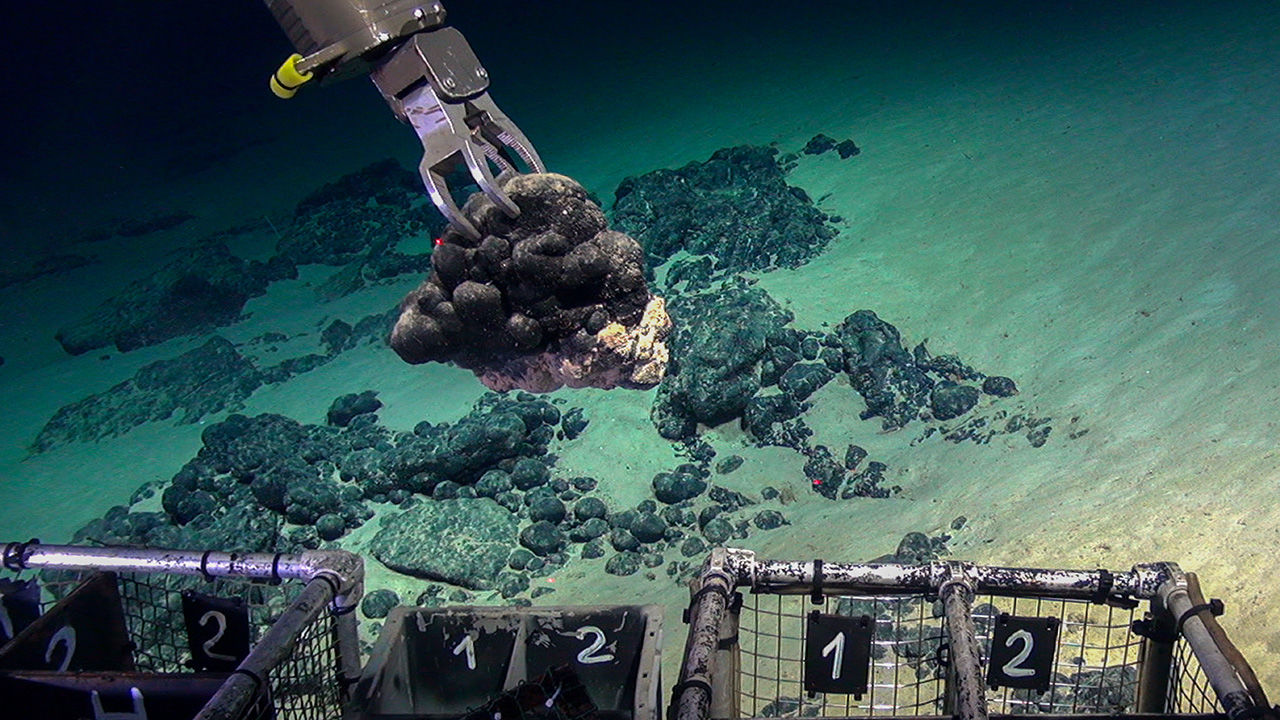Scattered throughout the ocean are thick, metal-rich crusts that grow slowly on the exposed sides of seamounts. Among the three major ore types that are the predominant focus of deep-sea mining, these cobalt-rich crusts have received the least attention. While polymetallic nodules have occupied the deep-sea mining community’s collective imagination since the genesis of the industry and seafloor massive sulphides dominated negotiations from the early 2000s to the mid 2010s, development on cobalt-rich crusts has been relatively quiet, with few projects within territorial waters and a handful of exploration leases in the Area. Of the 29 mining exploration contracts issued by the ISA, only five are for cobalt rich crusts.
Cobalt rich crusts are found throughout the world’s oceans, with the richest regions located in the mid-Pacifc, within the Area as well as the exclusive economic zones of the United States and the Federated States of Micronesia. Cobalt-rich crusts form on the flanks of seamounts, where ocean currents keep hard substrate exposed, allowing minerals to precipitate out of cold seawater onto rocky surfaces over millions of years. They are rich in cobalt (some deposits contain as much as 1.7% cobalt), as well as other essential modern metals such as titanium, tellurium, nickel, manganese, platinum, and several other rare earth elements. Crusts are among the shallowest forming of the deep-sea mining prospects, occurring between 400 and 4,000 meters. These crusts can be up to 25 centimeters thick and some estimates place the total surface area of cobalt-rich crusts at nearly 2% of the seafloor, containing approximately 1 billion tons of cobalt.
In several ways, cobalt-rich crusts are the most technically challenging of the ore bodies to access. Like nodules, cobalt crusts are spread across large areas (though not nearly as large as nodule fields). Like sulphides, cobalt crusts are part of the hard topology of the sea floor. They can’t be harvested like nodules and they aren’t as localized as sulphides. They possess the least desirable features of both other ore deposits.
Exploiting cobalt-rich crusts presents additional challenges that are absent with polymetallic nodules and seafloor massive sulphides. Crusts form on seamounts and comprise the hard structure upon which ecosystems develop. Seamounts are not only biodiversity hotspots, but frequently provide nursery grounds for economically important fisheries. Thus, the exploitation of cobalt-rich crusts not only has to contend with the environmental concerns raised by deep-sea stakeholders, but must also address their impact on other extractive industries dependent on the same geologic features.
Five contractors have active leases to explore cobalt-rich crusts in the Area. The Republic of Korea; Japan Oil, Gas and Metals National Corporation; and China Ocean Mineral Resources Research and Development Association all have lease blocks in the western Pacific. The Ministry of Natural Resources and Environment of the Russian Federation has a lease over the Magellan Mountains in the Pacific. And, perhaps most significantly, Brazil’s Companhia De Pesquisa de Recursos Minerais has a lease block for the Rio Grande Rise in the South Atlantic. Brazil has also petitioned the Commision on the Limits of the Continental Shelf for extended continental shelf rights over the Rio Grande Rise.
Featured photo: Cobalt-rich Crusts collected from the Tropic Seamount. Photo courtesy NERC.

